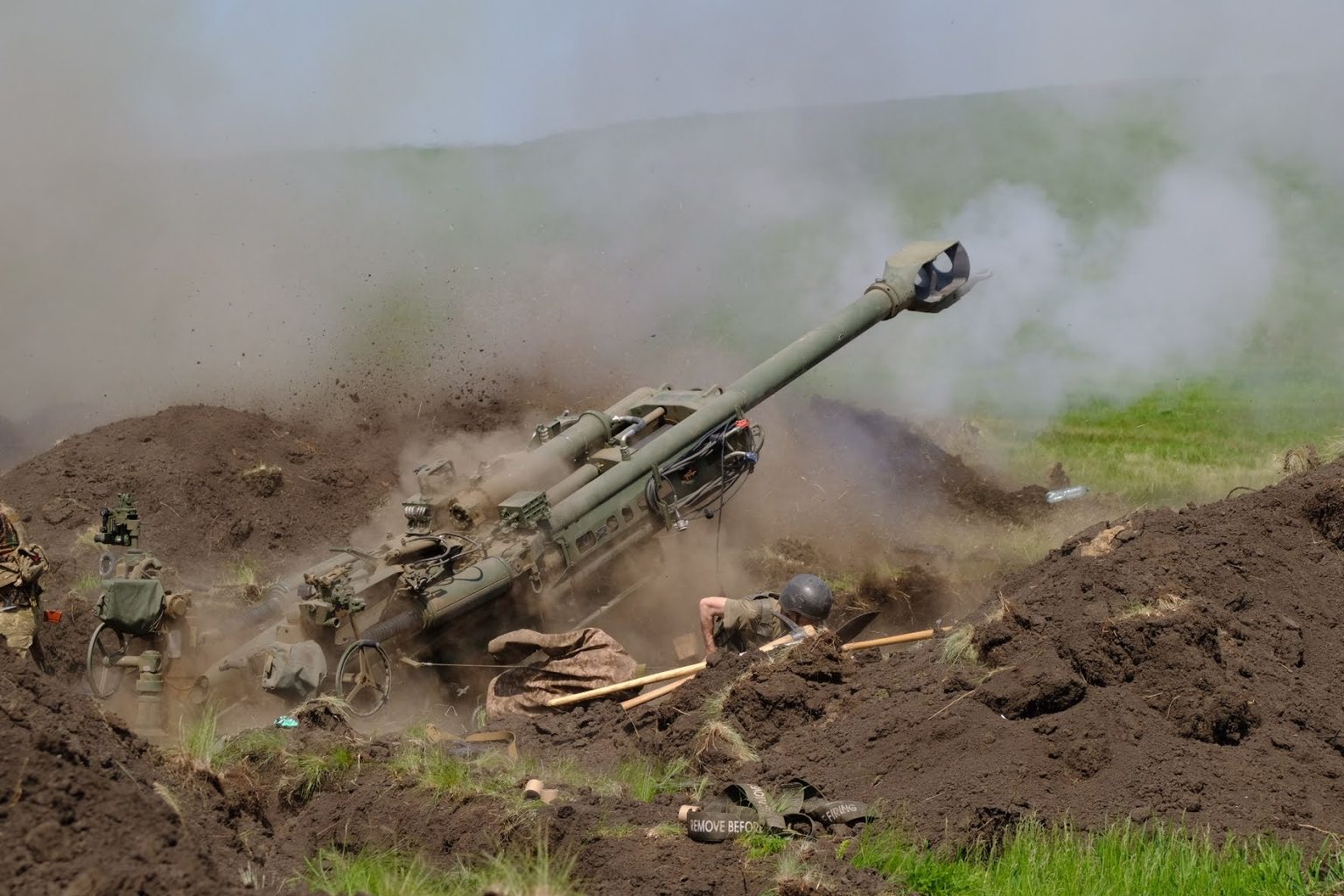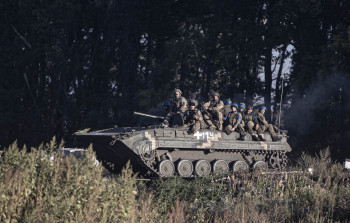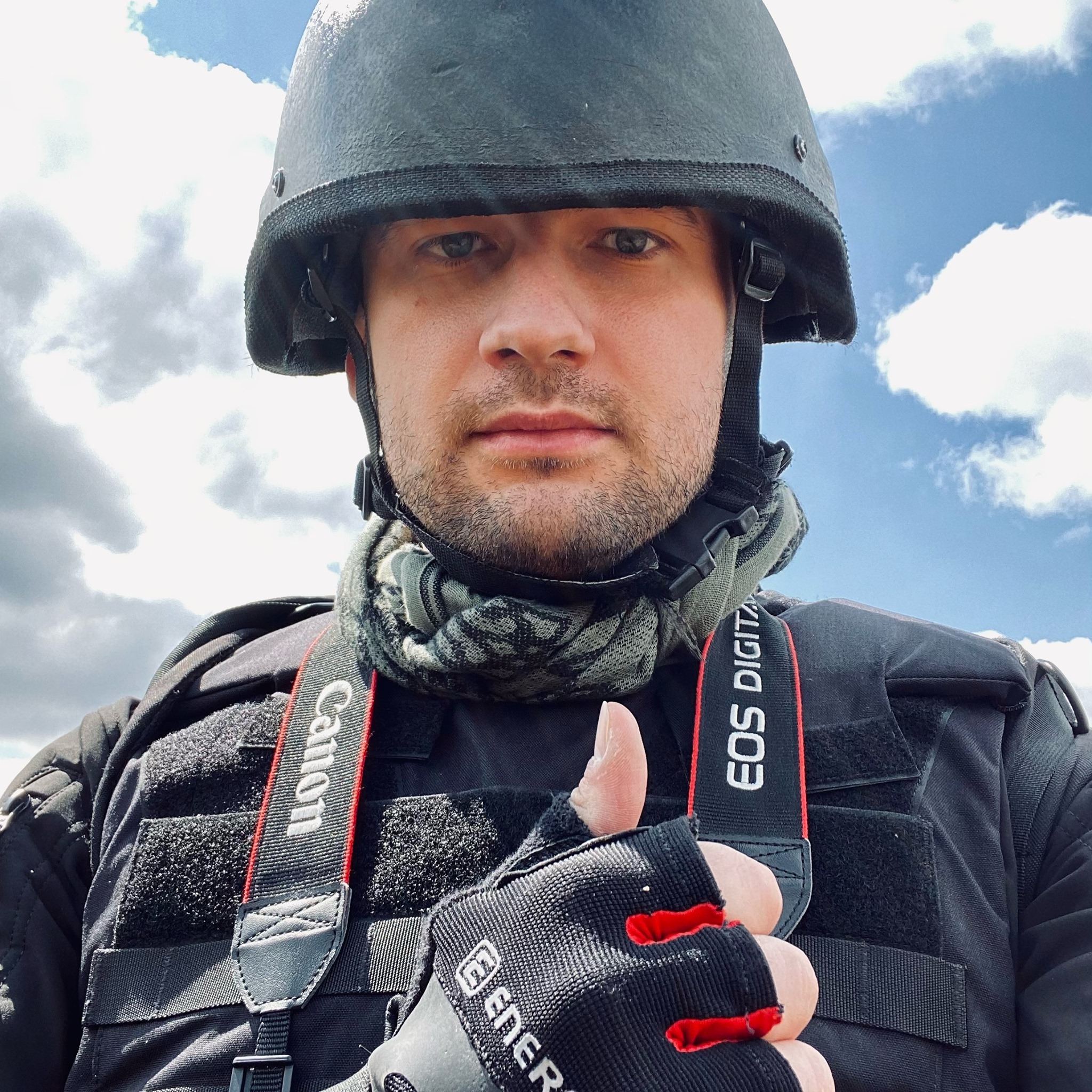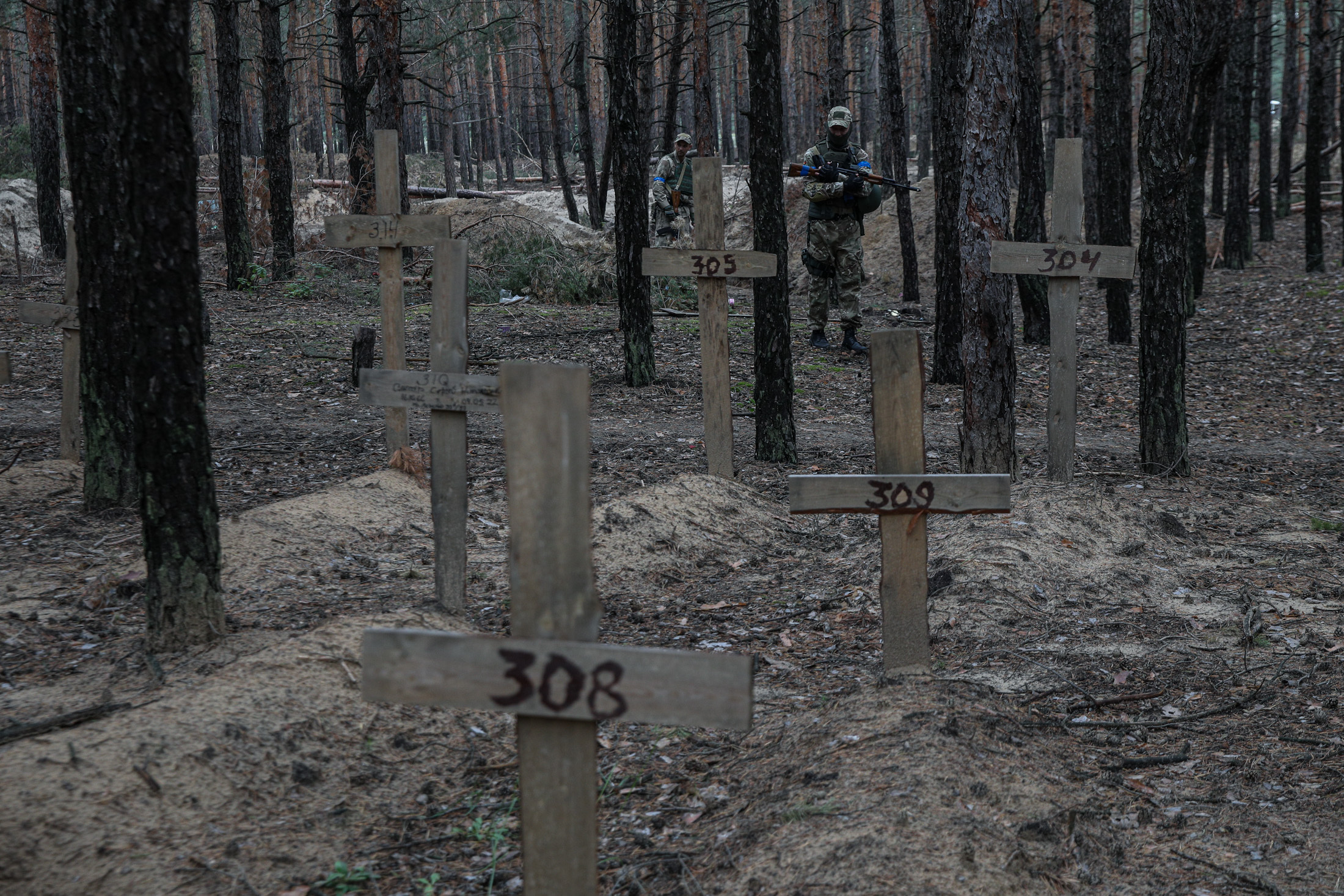The first week of Russia's earth-quaking mobilization campaign has topped all expectations — in terms of its harshness, hastiness, and chaos.
With the Russian positions in Ukraine rapidly deteriorating, the Kremlin upped the ante and risked announcing a draft. The regime aims to draft between 300,000 and over 1.2 million people, upon various reports.
The Kremlin adhered to the most straightforward way of generating manpower: Conscript just about anyone, give them little to no training, give them poor provisioning, and send them to the war zone within weeks or even days.
The chaos of mobilization emphasized the fundamental flaws of the Russian military that make it unfit for a large-scale war.
The war now enters a new phase. In it, Russia tries to stop the Ukrainian counter-strike and buy time with the primitive use of the regime’s most expendable resource – people.
Such an escalatory step precipitates an even more massive loss of life and even more brutal and intense hostilities.
And yet, it’s unlikely to help the Kremlin dramatically reverse the war's tide.
Chaotic draft
The Russian need for at least a partial mobilization became obvious by April when its regular army’s attempt to crush Ukraine in a blitz strike had failed.
In the following months, Russia continued to experience a slowly mounting lack of manpower. Scores of highly-skilled infantry were lost in intense battles against the Ukrainian military.
It was Russia's lack of manpower that enabled the Ukrainian military to find a weak spot in the 1,000-kilometer front line and deliver a devastating blow in Kharkiv Oblast in early September.
Yet, the Kremlin never resolved to launch mobilization until Sept. 21 – partly due to severe political and social risks inside Russia, but likely also due to the lack of adequate military infrastructure and resources to ensure an effective mass mobilization effort.

As many experts have repeatedly noted, Russia, which already commits almost the whole of its conventional potential to fighting Ukraine, is falling short of instructors, basic training facilities, as well as mid-tier commanders to organize, coordinate, and lead newly-created units.
In the decades following the end of the Cold War, the Russian mass mobilization framework has severely degraded in the absence of a real risk of major wars.
So when Russia’s quick campaign against Ukraine failed, it put the Kremlin into a kind of war it never even theoretically expected to fight.
In his address aired on Sept. 21, Vladimir Putin of Russia said that only those having military experience, a military-related specialty, and aged up to 35 will be drafted.
Putin called this a partial mobilization, which implies that only certain groups of reservists can be called up. But in reality, the decree declaring the campaign imposes very loose limits, including the classified total number of draftees envisaged, which makes it a full-fledged general mobilization.
All hell broke loose as Russian "military commissariats" started massively mobilizing everyone they could easily reach out to, including older men with no military experience, students, disabled people, or even those who had died a long time ago.
"This is happening because it is impossible to call up the demanded quantity of recruits in such a short term," wrote the Conflict Intelligence Team, an online war monitor.
"The first reservist training course was expected to be launched as soon as Sept. 26. So they take whomever they can get (fast) and those who dared to come to a recruitment office to ‘check personal files’."
"Issuing conscription notices to random people is happening… (due to recruitment offices') negligence in previous years. They have no idea how many battle-worthy people they have in their reserve registers."
In the flawed system that encourages quick formal results on paper rather than scrupulous quality work, military recruitment adhered to eye-washing to report success as soon as possible.
"The Kremlin is thus committing unmotivated and potentially angry men to war with the task of regaining the initiative in an offensive war in a foreign land on a battlefield far from home," the Institute for the Study of War (ISW), a U.S.-based think tank, said.
Little to no training
Besides, there's the time problem.
The Kremlin missed the months following the Battle of Kyiv failure, during which it had a chance to mobilize and organize new military units and also provide the personnel with proper, months-long training.
Instead, the Kremlin has made a way from employing short-term contract "volunteers" to letting the greatly empowered Wagner Group private company recruit convicts in prisons.
Now the time has run out. Ukraine has completed its own mobilization effort, having unfolded a standing military force of some 750,000 troops, vastly operating Western weaponry and advanced tactics.

As multiple testimonies on Russian social media suggest, Moscow found an ingenious solution in sending its newly-mobilized personnel to the war zone with very little or even no training.
In a now-famous video plea aired on Sept. 26, a newly-mobilized member with Russia's 1st Tank Regiment claimed his unit would not get any training before being sent to the Kherson Oblast on Sept. 29.
According to Russian opposition media outlet Mediazona, mobilized men of the 237th Tank Regiment, part of Russia's 3rd Motor Rifle Division, are being sent to Donbas after just one day of training.
The first waves of reservists are being sent to the front line to reinforce severely degraded Russian units rather than join newly-formed units.
Thus, on Sept. 28, the Ukrainian military confirmed that newly-mobilized personnel had already arrived in the 1st Tank Regiment, the 2nd Motorized Rifle Division of the 1st Guards Tank Army, with no training at all.
As the ISW concluded, such manpower is "unlikely to meaningfully reinforce Russian positions affected by Ukrainian counter-offensives in the south and east."
However, other testimonies shared on social media say some mobilized formations are to get between two weeks and a month of training. Which is still barely enough even for the draftees who had some military experience years ago.
"Mind it that to prepare a shitty soldier, you need a month of intense training," said Igal Levin, a Ukraine-based military expert and Israeli army reserve officer.
"You need three months to get a mediocre soldier, and six months to get a fairly good fighter. A commander requires at least six months, or up to one year, and even more."
The Kremlin is trying to address these fundamental issues and get more of somewhat qualified manpower as soon as possible at any price.
Over 120,000 young conscripts now seeing the end of their service term in October will likely be automatically mobilized again as those with military experience and less than 35 years old.
Those who once took the bait and signed a "short-term military contract" (3-12 months in service) to make some easy money fighting Ukraine are in big trouble now, too. According to the law, they can't leave as long as the mobilization period continues.
Besides, Putin introduced severe sanctions of up to 10 years in prison for "desertion, marauding, and voluntary surrender."
Then there's always the growing pressure upon Russian logistics.
Even the lowest estimate of draftees to be called up, the 300,000 voiced by Russia's defense minister Sergei Shoigu, demonstrate the campaign's immense scale.
The February invasion force thrown against Ukraine counted some 180,000-190,000 troops, including Russian-led militant forces of Donbas and mercenaries. Even at this scale, Russia's endemic logistics issues severely impeded its advances and precipitated the defeat at Kyiv.
Whether Russia can cope with the influx of hundreds of thousands of new personnel coming in the next weeks or months is a very open question.
Whether Russia can put the newly-arriving force to good use to meaningfully reinforce its degraded battalions and brigade, or even extend them into larger military units to be used in future offensive operations against Ukraine is also very unclear.
Meanwhile, the Ukrainian military continues making significant advances following the Russian front's rapid collapse in Kharkiv Oblast in September.
Following a series of strikes, Ukrainian formations, by Sept. 29, semi-encircled a Russian grouping in the area of Lyman in northern Donetsk Oblast, making the Russian defeat "potentially" imminent, according to the ISW.
Moreover, the Ukrainian forces also continue making incremental gains in Kharkiv Oblast east of the Oskil River, posing a threat to the large Russian-controlled center of Svatove in Luhansk Oblast.
This is what's already happening now as Russia only unfolds its problematic effort to save the day, which will take a lot of time or will end up being ineffective.

From the CIT's perspective, the deployment of tens and hundreds of thousands even barely trained reservists will make the war zone situation more complicated for the Ukrainian armed forces.
But at the same time, as the ISW believes, the Kremlin is unlikely to overcome fundamental structural challenges undermining this effort.
"The ‘partial mobilization’… will generate additional forces but inefficiently and with high domestic social and political costs," the ISW said.
"(Such forces), critically, are very unlikely to add substantially to the Russian military's net combat power in 2022. Putin will have to fix basic flaws in the Russian military personnel and equipment systems if mobilization is to have any significant impact even in the longer term. His actions thus far suggest that he is far more concerned with rushing bodies to the battlefield than with addressing these fundamental flaws."
Thus, the ISW said, this mobilization would not affect the war's course in 2022 and "may not have a very dramatic impact on Russia's ability to sustain its current level of effort into 2023."
"The problems undermining Putin's effort to mobilize his people to fight, finally, are so deep and fundamental that he cannot likely fix them in the coming months—and possibly for years. Putin is likely coming up against the hard limits of Russia's ability to fight a large-scale war."
Note from the author:
Hello! My name is Illia Ponomarenko, the guy who wrote this piece for you.
I hope you found it useful and interesting. I work day and night to bring you quality stories from Ukraine, where Russia is waging the biggest war in Europe since WWII. My little homeland, Donbas, is now the site of the worst fighting. We are helping to keep the world informed about Russian aggression. But I also need help from every one of you — to support Ukrainian wartime journalism by donating to The Kyiv Independent and becoming our patron.
Together, we can help bring peace to Ukraine.














